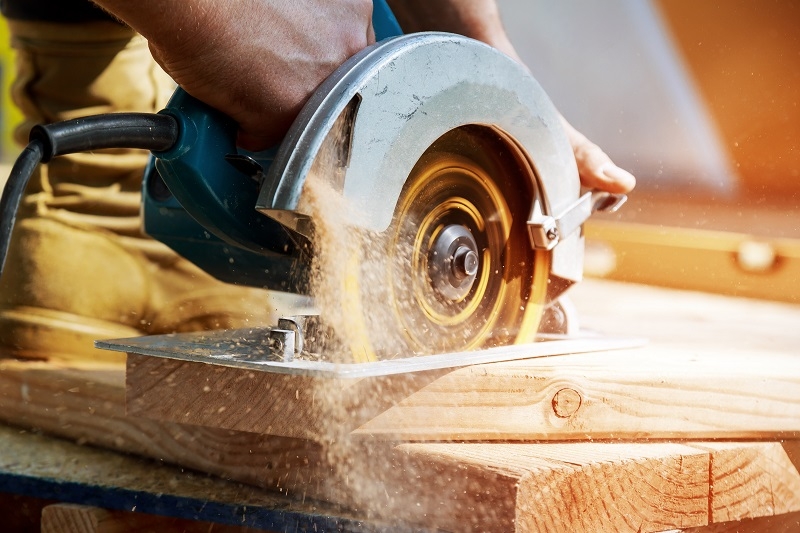Published: 16/10/23 By: Mike Bekin
When it comes to woodworking and decking projects, understanding the basics of cutting your timber is essential. Two fundamental types of cuts you will often encounter during decking construction are rip cuts and cross cuts, both of which can be crucial to the success of your project. Knowing the difference between the two will go a long way to improving your woodworking skills! With that in mind, our team at EcoChoice have put together an easy-to-understand guide with everything you need to know.
What Are Rip Cuts?
A rip cut is a term used to describe a cut which is made parallel to the wood's grain. The grain of timber shows you the direction in which the fibres within the wood are orientated, and cutting along this line usually means cutting the board lengthwise. The end result is one board turned into two (or more) narrower boards.
Rip cuts are usually used for tasks such as creating narrow boards, trimming the edges of plywood or turning larger boards into smaller, more manageable pieces.
By cutting with the grain, you will end up with smooth, more predictable cuts. Rip cuts also help to maximise the usable surface area of the timber and reduce waste.
What Are Cross Cuts?
In contrast to rip cuts, cross cuts involve cutting the timber board across the wood grain, perpendicular to its fibres. Think of it as slicing a piece of wood like a loaf of bread, creating smaller sections with consistent thickness. With a cross cut, you will be left with more uniform boards which are less likely than rip cuts to split along the grain.
Cross cuts are commonly used for tasks such as cutting the ends of decking boards to the correct length, either before or after installation.
When to Use Rip Cuts and Cross Cuts
When installing your decking boards, it is a good idea to know when you will use rip cuts and cross cuts. This will also translate into other woodworking projects, making you a timber-cutting pro!
Rip cuts should be used when you need to create narrower timber boards for your decking. For example, if the boards you have are too broad for your aesthetic you could use a rip cut to split them in half. You can also use rip cuts when end boards are too wide for your frame, leading to overhanging planks.
Cross cuts create timber decking boards of uniform length. Many builders use cross cuts to ensure the timber boards on which they are working fit within the decking frame, creating a neat, smooth edge. It is also a cut which is frequently used when the decking is finished to neaten up decking boards after installation, and in the coming months when movement of your boards can lead to some uneven edges.
Tips For Cutting Your Timber Boards
Whether you are using a rip cut or a cross cut on your decking boards, there are methods you can follow to ensure precision. Here are some of our team's top tips:
- Measure twice, cut once to reduce inaccuracy
- Invest in high-quality saws for a cleaner cut
- Use clamps to secure your decking boards before cutting
- Make test cuts on scrap wood until you feel confident
Be sure you wear the appropriate safety gear! Safety glasses and hearing protection are a must when working with power tools.
Get More Help at EcoChoice
Whether you are installing timber decking yourself or would like to know more about the process before making your decision, our team at EcoChoice will be more than happy to help. Get in touch with us today and let’s chat about your project.
Image: ungvar / Shutterstock.com
